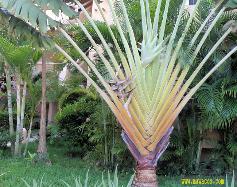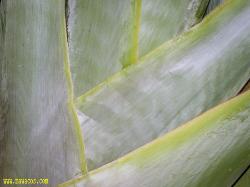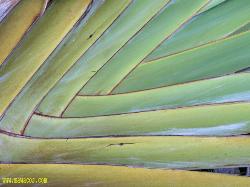

Palma del Viajero
Traveler´s Palm
Ravenala madagascariensis
Traveler´s Palm
Ravenala madagascariensis
| Photos and text by David Nuñez |
| Aunque no es originaria de México, sino de Madagascar, hoy en día se le encuentra no solo por todo México, sino por los trópicos alrededor del mundo. Desde hace años que la admiro, por su distintiva simetría, pero recién descubrí que se llama así por dos curiosas adaptaciones. La primera es que almacena agua en su tallo, por lo que algún sediento pudiera aliviar su sed simplemente perforándolo. Y la segunda es que normalmente se encuentra orientada de oriente a poniente, sirviendo así de compás primitivo. |
| Though it is not a native of Mexico, but rather of Madagascar, today I decided to share with you something I recently learned about the Traveler´s Palm. Nowadays it is found not only throughout Mexico, but in the tropics around the world. I´ve admired it for years for its distinctive symmetry, but I just recently found out it owes its name to two curious adaptations. The first is that it stores water in its trunk, so that one may quench one´s thirst by perforating it. The second is that it is usually oriented east to west, thus serving as a primitive compass. |
| Recomendamos estos libros sobre la Fauna de México. (Los nuestros son bilingues.) |
| To learn more about the Wildlife of Mexico, we recommend the following books. |















